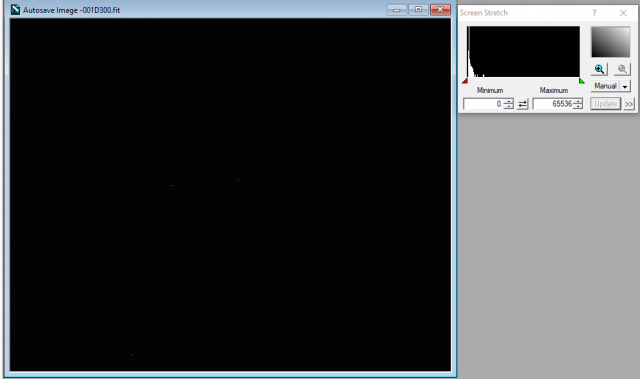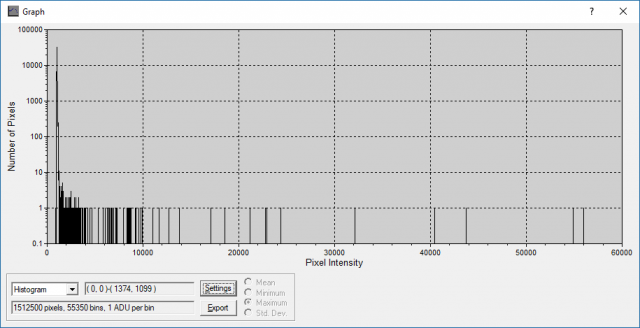› Forums › Spectroscopy › New Atik 460, does it have too many hot pixels? › CCD Hot Pixels
Hi John,
I have a 5 year old Starlight Xpress SXVR-H694. This uses the same chip as your Atik 460 Ex and I still have my dark frames from when it was new. Here are a few screenshots for comparison, noting these are 2×2 and 300 seconds, so half the exposure time of your dark frames. Also I always run my camera at -15C or -20C, and these were taken at -15C. You will still get good results at warmer temperatures, but I do all I can to mitigate thermal/dark noise. You can do a test to see how cold you camera can go, but always set the target temperature a few degrees above that so the temperature can easily be held constant.
As you have found, how you set the screen stretch makes a big differences as to how the dark frame looks. If you stretch the image enough then you will always see hot pixels, though when they are only slightly above the normal level it is better to think of them in terms of warm pixels. These warm pixels should not degrade your observations by much when you use dark frames to correct for them.
My first screenshot is of a medium screen stretch in MaximDL. This is an aggressive linear stretch with black at 1001.8 and white at 1223.9, so this really emphasizes the warm pixels. These pixels will have a minimal affect of the data quality as long as they are corrected by a dark frame.

I now switch to a linear stretch for the range of the camera with black at 0 and white at 65536. Now none of the warm pixels show up, but there are at least 4 hot pixels.

Finally, it is informative to look at a histogram of the CCD. Note the number of pixels is on a log scale, vertically up, with the intensity along the x-axis. So there are a handful of hot pixels above 10000 while a reasonable number from about 2000 to 10000. These warmer pixels will loose some dynamic range but after dark subtraction will still hold useful photon counts.

Cheers,
Andy
